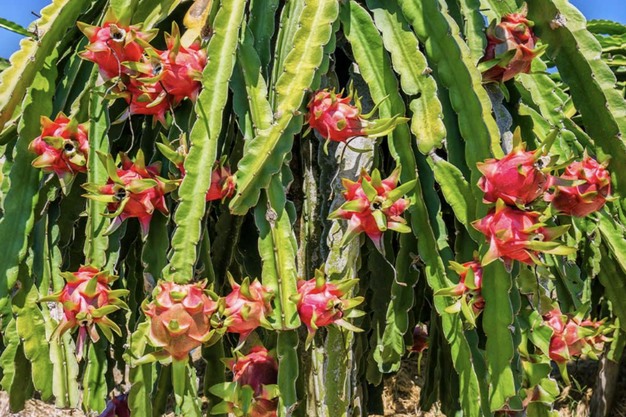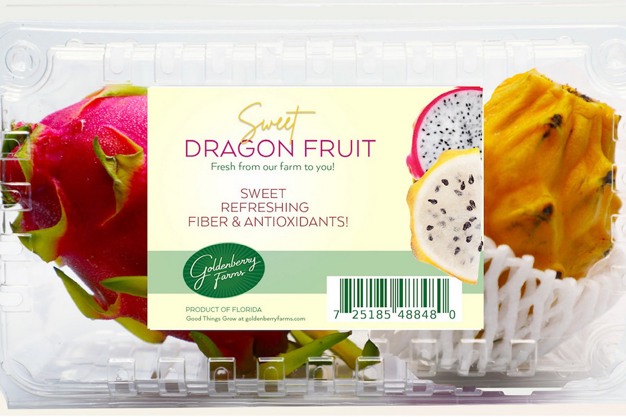Interest looks to be continually growing in North America for exotic fruit. “Post-COVID, retailer data is showing us that consumers are continuing to seek “better for you” items which include tropical and exotic fruit. Aside from being more colorful and newer to North American consumers, tropical and exotic fruits typically feature higher antioxidant and nutrition levels,” says Christopher Palumbo of Goldenberry Farms™. “Retailers understand that new, colorful exotics help make the produce section more compelling, which in turn can increase lingering and traffic, key metrics to spending.”
 Goldenberry Farms operates a sustainable-growing operation for red dragonfruit and pitaya (yellow dragonfruit) in Colombia, Ecuador and Costa Rica.
Goldenberry Farms operates a sustainable-growing operation for red dragonfruit and pitaya (yellow dragonfruit) in Colombia, Ecuador and Costa Rica.
One of the tropicals with strong popularity is dragonfruit, a fruit particularly fit for this year’s “Year of the Dragon” Lunar New Year season. “Some companies are trying to make that connection, which is a relevant marketing tie-in. However, dragonfruit in and of itself has surged in demand,” says Palumbo. He believes the fruit is moving away from becoming a specialty and more a commodity item. “In parts of North America, dragonfruit is a fruit that people now have access to every week and overall retail pricing is stabilizing. Therefore it is something people will buy on repeat. As there are more growers and more efficiencies in logistics, the traditional varieties are becoming more of a staple and the elevated retailers are seeking the more rare pink and purple varieties which we are now developing.”
Lunar New Year demand
Along with the item gaining steady ground with U.S. consumers, Palumbo says the Lunar New Year opens a new consumer segment for a short period. “During Lunar New Year, it’s not that overall demand at the supermarket goes up. Lunar New Year is its mini-season, just like Christmas is for some items,” he says.
 The company's clamshells contain 90 percent post-consumer recycled materials and are manufactured in South America to minimize the carbon impact of shipping materials globally.
The company's clamshells contain 90 percent post-consumer recycled materials and are manufactured in South America to minimize the carbon impact of shipping materials globally.
As for supply, while many growing regions in South America are being affected by El Nino this season, shipments have been steady from the regions Goldenberry Farms imports red and yellow dragon fruit for program customers from--Ecuador, Colombia and Costa Rica for Canadian and European clients.
Looking ahead, in March, the importer hopes to unveil a recyclable clamshell that will hold both red and yellow dragon fruit. “The U.S. consumer is very accustomed to the red with white flesh dragon fruit but we haven’t seen the same demand for yellow. Most customers don’t realize there’s a difference in the flavor so putting them together in a clamshell in a new presentation will be a unique and interesting offer,” says Palumbo.
 For more information:
For more information:
Christopher Palumbo
Goldenberry Farms
info@goldenberryfarms.com
https://www.goldenberryfarms.com/
